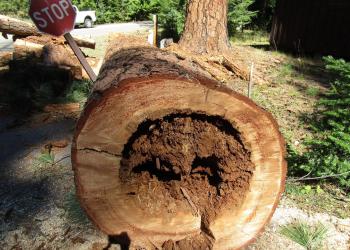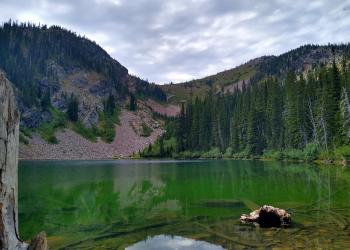Safety and Outdoor Ethics
When visiting a National Forest, you will find many areas to enjoy and explore; however, in this large and diverse landscape there are sometimes safety hazards.
The following sections highlight some challenges you may encounter and offer suggestions on how you can recreate more safely in the great outdoors.
Keep Mountain Goats Wild

Scotchman Peak mountain goats are iconic. They're also best viewed from a distance.
Safety in Bear Country

A food storage order requires food storage practices on portions of the national forest to reduce the potential for human-wildlife conflicts.
Identifying and Avoiding Dangerous Trees

It is vitally important for forest visitors to understand that hazardous trees may be present anywhere on the national forest
Avalanche Awareness

Avalanche advisories are updated weekly in winter, plus information on avalanche awareness classes, and other reference materials.
Guarding Against Giardia

Backcountry streams and lakes, although clear and clean in appearance, often harbor a hidden danger.
Traveling Forest Roads

Traveling your national forest roads can be fun! It can also be dangerous! Here are some things to consider when traveling national forest roads.
North Idaho Prescribed Fire Information

Prescribed fire is used to provide a variety of benefits which include the reduced risk of high-intensity wildfire and improved forest health.
Leave No Trace

Leave No Trace is an environmental philosophy that promotes responsible outdoor ethics to minimize human impact on nature. Let's protect and enjoy our natural world together!


